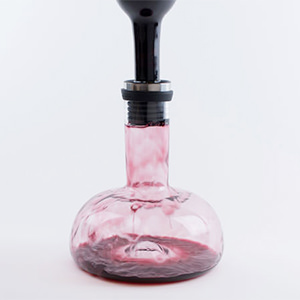A rarified world of numbered paddles and thick glossy catalogs, where individual lots routinely cost as much as a down payment on a house. That may be what comes to mind when picturing a wine auction, but the burgeoning popularity of online wine auctions has shifted the landscape dramatically, democratizing a formerly posh affair.
I first entertained the idea of consigning wine in January, when I received an email from Hart Davis Hart stating that they were taking consignments for upcoming auctions and that the market was in a very good place to sell. I have some lovely bottles in my cellar, but nothing worth more than a few hundred dollars, which I didn’t think they’d be interested in. Nevertheless, I responded to the email with a list of wines for appraisal. They cordially got back to me in a few days and demurred — sure enough, I was right. There were a couple bottles they might be interested in, but only if I had a full case.
A few months later, in the throes of the coronavirus pandemic, I realized I could use the funds from parting with some of these bottles. I had heard a lot about Acker’s online wine auctions from friends, and it seemed like they were interested in a broader range of wines. I reached out and had a great experience working with Rob Molyneaux, Acker’s regional representative in the Chicago area. I sent in a list of my wines and within a couple days an appraisal was prepared, listing each wine with a high and low estimate plus a reserve price, so I could determine which wines to part with and which to keep.
HOW IT WORKS
Acker charges a 3 percent handling fee, based off of the high estimate, for inventory inspection and cataloging, and shipping is the responsibility of the consignor. They were the first auction house with a zero percent seller’s commission, which transformed the industry to a much better marketplace for sellers.
After determining how many bottles to consign, empty wine shipment boxes arrived via FedEx for me to fill, and I scheduled pickup from my doorstep. Fees and shipping charges are removed from the proceeds of sale, so there’s no money required upfront. With regular weekly auctions, my wines were up for auction the following week, grouped by Acker into lots with select bottles sold individually. They kept me informed every step of the way, confirming that the wines arrived and passed inspections, and then sent a post-sale report the day after the auction closed. The entire process went really smoothly and I was pleasantly surprised by how easy it was. Checks are mailed approximately 30 days after the auction closes.
All auction houses operate on a consignment model, but Acker was far and away the market leader in Q1 2020, selling close to $30 million of wine at auction, which was three times the size of its nearest competitors. Acker has hosted online wine auctions on a monthly basis for 20 years now, but last autumn it increased the frequency to weekly, a prescient decision in light of the Covid-19 crisis.
“There has been a 25 percent increase in the number of overall bidders since our live auctions have gone virtual in April, and the overall dollars consigned has been in line with our pre-pandemic expectations,” says Acker chairman John Kapon. “We are in the midst of another strong quarter despite going completely virtual.”
Other auction houses may differ slightly in fees or procedure, but the general process of consigning is similar.
TIPS FOR FIRST-TIMERS
For Acker, Burgundy is the king of the market, accounting for 40 to 50 percent of overall dollars sold, led by Domaine de la Romanée Conti, which accounts for more than 10 percent of the market on its own. Bordeaux follows at 25 to 30 percent but the eclectic selection includes wines from around the world.
“We like to call our online auctions ‘a drinker’s auction’ because there are great, smaller lots of one to three bottles that many clients like to try out before they commit to larger quantities,” Kapon says. “Mixed lots are also very popular, whereby we group sets of desirable bottles together under one lot.” He recommends that consignors provide all details about their bottles upfront to expedite the consignment process. Especially for older bottles, where the bottle was purchased and how it has been stored is as critical as the vintage and producer.
At Zachys, wine sales and consignments have been holding steady through the pandemic, according to senior specialist and auctioneer Charles Antin.
“Find someone you trust to help guide you through the process,” he suggests. “The best auction specialists know that a long term relationship is the best one. Also, decide what you want from the process and what results will make you happy. Do you want to be intimately involved or do you want someone to handle everything for you?”
As for which regions are popular with the Zachys audience, Antin says it leans heavily to Burgundy and Bordeaux, with Piedmont, Champagne, and California. But other regions are represented as well. “Our e-auctions are a great place to find slightly more esoteric wines from the Loire, Germany, and Australia,” he says.
